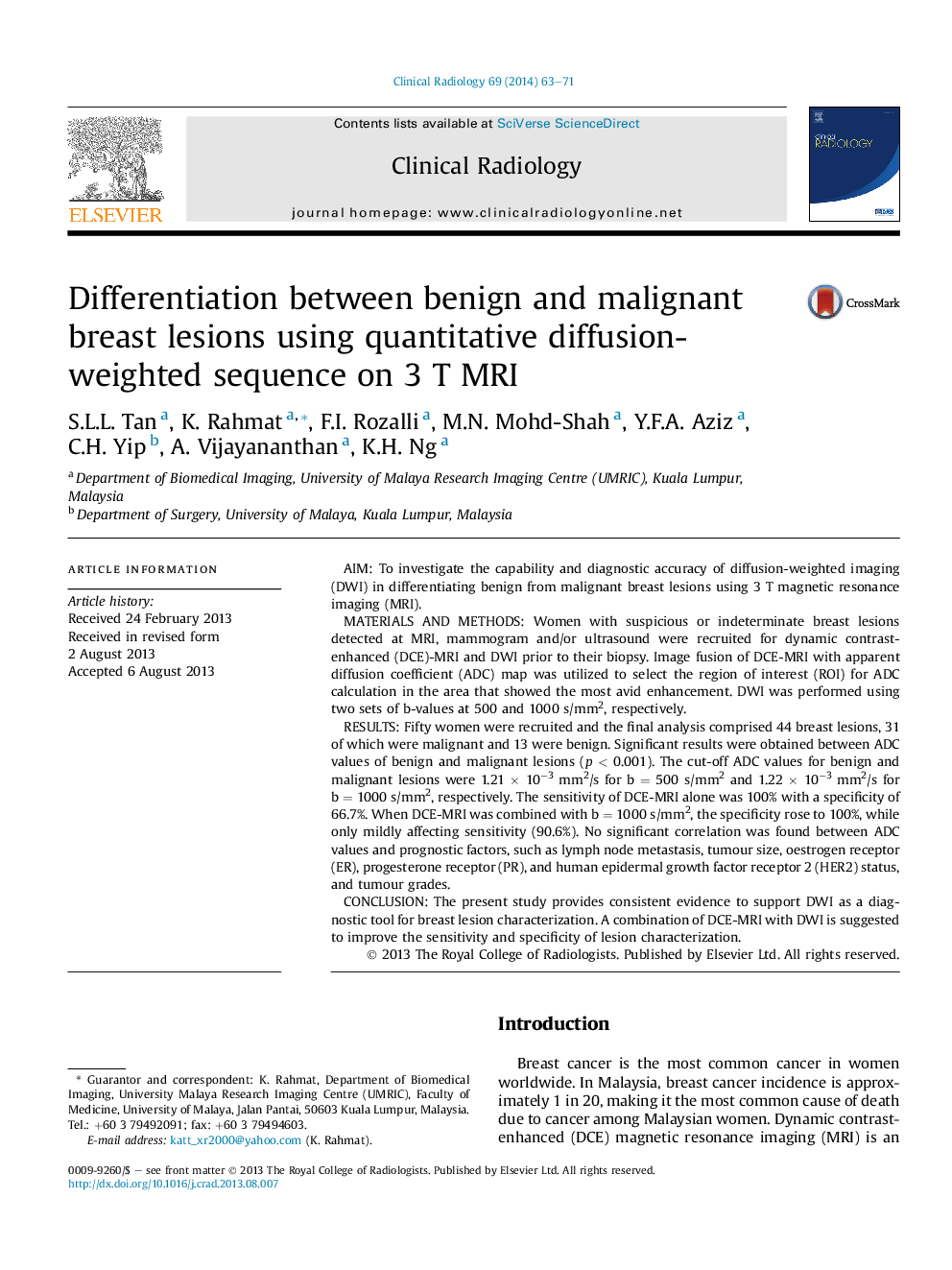| Article ID | Journal | Published Year | Pages | File Type |
|---|---|---|---|---|
| 3981713 | Clinical Radiology | 2014 | 9 Pages |
AimTo investigate the capability and diagnostic accuracy of diffusion-weighted imaging (DWI) in differentiating benign from malignant breast lesions using 3 T magnetic resonance imaging (MRI).Materials and methodsWomen with suspicious or indeterminate breast lesions detected at MRI, mammogram and/or ultrasound were recruited for dynamic contrast-enhanced (DCE)-MRI and DWI prior to their biopsy. Image fusion of DCE-MRI with apparent diffusion coefficient (ADC) map was utilized to select the region of interest (ROI) for ADC calculation in the area that showed the most avid enhancement. DWI was performed using two sets of b-values at 500 and 1000 s/mm2, respectively.ResultsFifty women were recruited and the final analysis comprised 44 breast lesions, 31 of which were malignant and 13 were benign. Significant results were obtained between ADC values of benign and malignant lesions (p < 0.001). The cut-off ADC values for benign and malignant lesions were 1.21 × 10−3 mm2/s for b = 500 s/mm2 and 1.22 × 10−3 mm2/s for b = 1000 s/mm2, respectively. The sensitivity of DCE-MRI alone was 100% with a specificity of 66.7%. When DCE-MRI was combined with b = 1000 s/mm2, the specificity rose to 100%, while only mildly affecting sensitivity (90.6%). No significant correlation was found between ADC values and prognostic factors, such as lymph node metastasis, tumour size, oestrogen receptor (ER), progesterone receptor (PR), and human epidermal growth factor receptor 2 (HER2) status, and tumour grades.ConclusionThe present study provides consistent evidence to support DWI as a diagnostic tool for breast lesion characterization. A combination of DCE-MRI with DWI is suggested to improve the sensitivity and specificity of lesion characterization.
